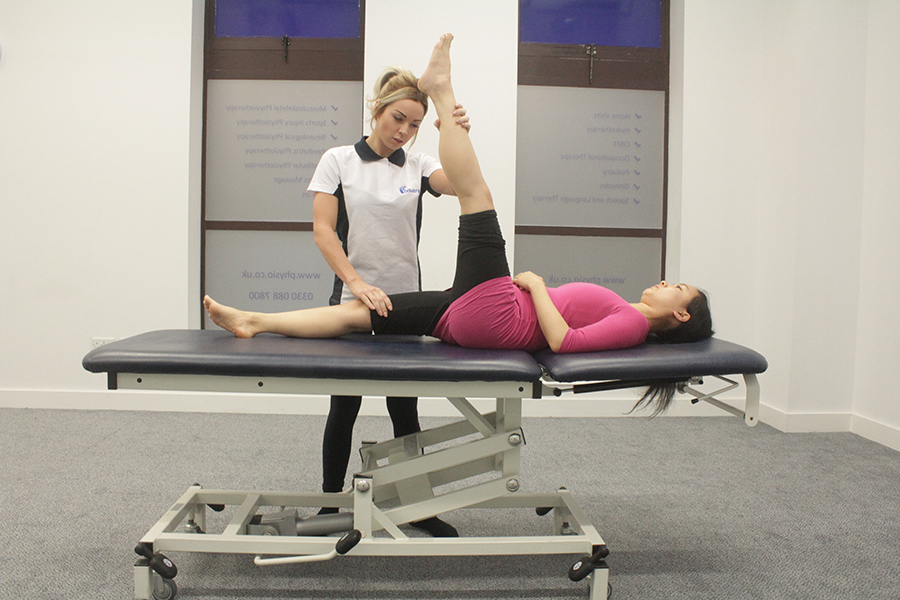Fractures of the fifth metatarsal
A fracture of the fifth metatarsal involves a break or crack to the fifth metatarsal. The fifth metatarsal is the bone that runs down from the middle of the foot to the fifth toe (the little toe).
Fractures of the fifth metatarsal are the most common fracture affecting the foot. The fifth metatarsal is a long thin bone on the outside of the foot that connects the mid-foot to the fifth toe (also known as the little toe). Fractures to the fifth metatarsal vary in severity, but all involve either a brake or crack to the bone.
The metatarsals are involved in supporting the foot and propelling the body forward. The fifth metatarsal can therefore be injured through either overuse, due to the excessive and frequent stresses being placed upon it, or, through direct trauma. Footballers are particularly prone to fractures of the fifth metatarsal.
The signs and symptoms of a fracture of the fifth metatarsal may include:

There are three types of fracture of the fifth metatarsal, it is important to distinguish between each type of fracture as the treatment options are different. The fractures that affect the fifth metatarsal include:
Stress Fracture
A stress fracture is a small crack in the bone that occurs as a result of repetitive micro trauma.
Avulsion Fracture
An avulsion fracture occurs as a result of a ligament or tendon pulling a part of the bone away. Avulsion fractures are the easiest fractures to heal.
Acute (Jones) Fracture
An acute fracture is caused by an injury. The bone breaks but with no damage to surrounding structures. A jones fracture specifically refers to an acute fracture of the fifth metatarsal, it appears at the base, which is the end nearest the little toe.
It is important to distinguish a Jones fracture from other fractures, as this type of fracture can affect the blood supply and therefore requires immediate treatment. Acute fractures take the longest time to heal.
A diagnosis of a fracture to the fifth metatarsal is made based on the physical signs and symptoms. An X ' ray may be necessary to confirm the diagnosis.
The following is a list of benefits that may be achieved following podiatric intervention at Chiropody.co.uk for a fractured fifth metatarsal:
A first appointment at Chiropody.co.uk always begins with an assessment. First we obtain a history, which consists of a medical, as well as an objective and a subjective history. The history is a very important component of the assessment as it both aids diagnosis and informs treatment.
Treatments that may be recommended for a fractured fifth metatarsal include:

A fracture of the fifth metatarsal is a break or crack in a bone in the foot called the fifth metatarsal. The fifth metatarsal is one of five long thin bones that connect the mid-foot to the toes, the fifth metatarsal is on the outside of the foot and it connects to the little toe.
There are a number of different types of fracture and these can vary in severity. The treatment available to you will therefore depend on the type of fracture and its stage of healing. Podiatry can help by supporting the foot when healing, and also after to prevent further fractures. Podiatry can also ease any stiffness that has occurred as a result of the fracture.
To arrange an assessment with one our podiatrists please email office@chiropody.co.uk or call 0330 088 4222.
What are fractures of the fifth metatarsal?
Fractures of the fifth metatarsal are the most common fracture affecting the foot. The fifth metatarsal is a long thin bone on the outside of the foot that connects the mid-foot to the fifth toe (also known as the little toe). Fractures to the fifth metatarsal vary in severity, but all involve either a brake or crack to the bone.
What causes a fracture of the fifth metatarsal?
The metatarsals are involved in supporting the foot and propelling the body forward. The fifth metatarsal can therefore be injured through either overuse, due to the excessive and frequent stresses being placed upon it, or, through direct trauma. Footballers are particularly prone to fractures of the fifth metatarsal.
What are the signs and symptoms of a fracture of the fifth metatarsal?
The signs and symptoms of a fracture of the fifth metatarsal may include:
- Pain
- Tenderness
- Swelling
- Redness and/or bruising
- Difficulty walking

Types of fracture of the fifth metatarsal
There are three types of fracture of the fifth metatarsal, it is important to distinguish between each type of fracture as the treatment options are different. The fractures that affect the fifth metatarsal include:
Stress Fracture
A stress fracture is a small crack in the bone that occurs as a result of repetitive micro trauma.
Avulsion Fracture
An avulsion fracture occurs as a result of a ligament or tendon pulling a part of the bone away. Avulsion fractures are the easiest fractures to heal.
Acute (Jones) Fracture
An acute fracture is caused by an injury. The bone breaks but with no damage to surrounding structures. A jones fracture specifically refers to an acute fracture of the fifth metatarsal, it appears at the base, which is the end nearest the little toe.
It is important to distinguish a Jones fracture from other fractures, as this type of fracture can affect the blood supply and therefore requires immediate treatment. Acute fractures take the longest time to heal.
How are fractures of the fifth metatarsal diagnosed?
A diagnosis of a fracture to the fifth metatarsal is made based on the physical signs and symptoms. An X ' ray may be necessary to confirm the diagnosis.
Benefits of podiatry for fractures of the fifth metatarsal
The following is a list of benefits that may be achieved following podiatric intervention at Chiropody.co.uk for a fractured fifth metatarsal:
- Cause not just the symptoms treated
- Decrease in pain
- Quicker healing time
- Improvement in range of joint motion
- Improvement in foot and lower limb function
- Improved gait
- Increase in muscle strength
- Decrease in muscle tightness
- Reduced risk of future injury
What would podiatry for a fracture of the fifth metatarsal involve?
A first appointment at Chiropody.co.uk always begins with an assessment. First we obtain a history, which consists of a medical, as well as an objective and a subjective history. The history is a very important component of the assessment as it both aids diagnosis and informs treatment.
Treatments that may be recommended for a fractured fifth metatarsal include:
- Orthoses
- Strengthening exercises
- Stretching Programmes
- Lipus
- Advice and education
- Strapping
- Rest
- Activity modification
- Footwear review

Summary
A fracture of the fifth metatarsal is a break or crack in a bone in the foot called the fifth metatarsal. The fifth metatarsal is one of five long thin bones that connect the mid-foot to the toes, the fifth metatarsal is on the outside of the foot and it connects to the little toe.
There are a number of different types of fracture and these can vary in severity. The treatment available to you will therefore depend on the type of fracture and its stage of healing. Podiatry can help by supporting the foot when healing, and also after to prevent further fractures. Podiatry can also ease any stiffness that has occurred as a result of the fracture.
To arrange an assessment with one our podiatrists please email office@chiropody.co.uk or call 0330 088 4222.
Save 5% by booking an appointment online.

Find your nearest clinic
We have clinics located throughout the North West. We also provide a home visit service.
Find out more »

No waiting lists!
Tired of waiting for treatment? Be seen by a podiatrist today!
Find out more »

Not sure how we can help?
Speak to a podiatrist to find out how we can help. Call us on 0330 088 4222.
Find out more »
We work with:

Individuals

Organisations

Health professionals
Get in Touch!
0330 088 4222
If you would like to speak to one of our specialists then please complete this form.
We are open 7 days a week








